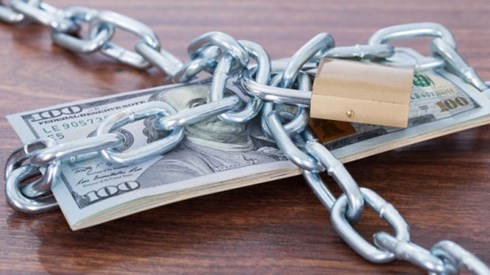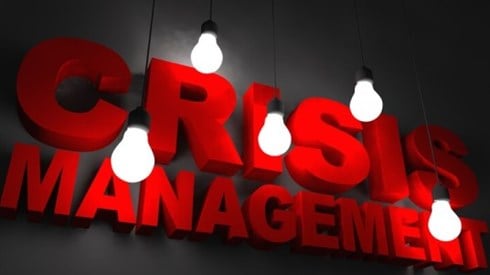Why Underwriting Discipline Is Critical for Captives

John M. Foehl | April 29, 2020

With all the focus on the current COVID-19 pandemic, it's easy for executives to get swept up in events and lose sight of the more mundane aspects of insurance. One area I want to touch on is the need to maintain underwriting discipline. While this article is primarily targeted at group and association captives, the issue I raise will be germane to all captive insurers.
Let's start with some basic information. According to the National Association of Insurance Commissioners, in 2018, the latest year available, the average return on surplus for the US property-casualty insurance industry was 7.4 percent.1 The 5-year average was 6.9 percent.2 What these averages mask, however, is the wide disparity in returns within the sector. For those companies reporting net income in 2018, return on equity (ROE) ranged from a low of 0.4 percent to a high of almost 60 percent.3 Not surprisingly, those companies in the higher end of the range reported much better underwriting results than those in the lower quartiles. While I didn't extract the data for the 5-year period, I would hazard a guess that the companies that consistently reported higher ROEs also reported consistently better underwriting results. These companies, therefore, exhibited an ongoing commitment to underwriting discipline.
Before going on, it is also important to remind readers that there are only two avenues for insurers to generate income. The first, as we just commented on, is through a disciplined approach to underwriting that consistently results in underwriting income. The second, and the one that is often more prevalent, is through investment income.
Let's look first at the potential impact on investment income for captive insurers. Since the start of the pandemic, investment markets have become highly volatile. Captive insurers, with their looser restrictions on investments, tend to have higher concentrations in equities and other nonfixed income investments. These securities will have suffered material declines in their market values leading to mark-to-market losses.
Even captive insurance companies with relatively low-risk portfolios will be affected. Cash flow from interest income will most certainly be impacted both due to falling rates and delinquent interest payments. As reported in "Potential Implications of COVID-19 for the Insurance Sector," a March 18, 2020, Deloitte Insights article by Gary Shaw, "The Federal Reserve, in its first emergency move since the recession in 2008, on March 3 cut the federal funds rate by 50 basis points, then cut it again to near zero on March 15." A lengthy pandemic could mean higher credit risk for captive insurers as a result of the inability of some industries to pay their debts.
One final comment regarding investment income: no one knows for sure how the longer-term interest rate environment will turn out. One possibility, though, is that with all the debt issued to help deal with the COVID-19 crisis, inflation will start to rear its head. While captive insurers might well welcome the increase in interest rates, it will have a deleterious effect on the market value of bonds in their current portfolios.
So, putting aside the investment income revenue stream and looking at the real business of insurance, what is likely to occur there? There are numerous articles (see search engine results for "COVID-19 impact on insurance companies investment portfolios") already in print that offer a view into what is likely to occur. One succinct piece that I found especially useful comes from EisnerAmper LLP, titled "The Impact of COVID-19 on Insurance Companies."4 The blog post suggests the following.
- Delayed payments—Regulators are urging insurance companies to accept late premium payments with no penalty, putting a strain on cash flow. Despite liquidity being impacted, insurance companies are still being expected to pay out claims.
- Decreased premium volume—Full or partial closing of businesses coupled with social distancing has led to decreased demand for insurance. Lower payroll levels lead to lower payroll-based premiums, such as those in workers compensation, and an uptick in layoffs results in fewer people buying houses, cars, and other insurable purchases. A decrease in premium volume means a decrease in income for insurers.
- Coverage disputes—Pandemics are generally excluded from insurance policy coverage and therefore policy premium has not included the necessary charges to provide such coverage. A number of states are attempting to legislate to force insurance companies to provide insurance coverage for business interruption and other losses for claims resulting from the COVID-19 pandemic. There is uncertainty regarding which party will ultimately incur the additional cost for these adjustments.
While captives may not be urged by their regulators to accept late premium payments, by being member-owned and driven, they are likely to experience this phenomenon. Couple that with the impact we have already discussed on cash flow from investments, and liquidity has the potential to become a problem.
Captive insurance companies will also have to deal with the other two problems as well. If for no other reason than declining exposure bases, premium volumes will fall. Captives may also decide to voluntarily return premium on existing business as is being done by commercial insurers, especially in workers compensation and commercial auto.
And, while we all want to believe we are in this together with our members, the fact remains some captives will have to deal with coverage disputes. Lawsuits have already commenced in several states over whether the pandemic is covered under business interruption. In addition, I am aware of at least one suit where the policy states it is an "all risk" policy. The plaintiff is contending that this term negates the exclusion in the policy for pandemics. Given the optics involved, would anyone be surprised if a court were to rule in favor of the plaintiff?
For the reasons enumerated above, and for all the rest I haven't covered here, captive insurers need to make sure they adhere to an underwriting discipline. In defining this term, I will quote from Warren Buffett's 2014 Annual Shareholder's Letter, as follows.5
At bottom, a sound insurance operation needs to adhere to four disciplines. It must (1) understand all [emphasis in original] exposures that might cause a policy to incur losses; (2) conservatively assess the likelihood of any exposure actually causing a loss and the probable cost if it does; (3) set a premium that, on average, will deliver a profit after both prospective loss costs and operating expenses are covered; and (4) be willing to walk away if the appropriate premium can't be obtained [emphasis added].
For captive insurance companies, number 4 above creates a conundrum. You exist to serve the needs of your members, so the expectation is you will underwrite the risk. But your captive will only survive long-term if you maintain relationships with your good risks and reduce the probability of adverse selection. Now is the time to assess whether you can and will practice underwriting discipline.
- NAIC 2018 Annual Report on the U.S. Property & Casualty and Title Insurance Industries, Brian Briggs and Erika Cosey, contributors, National Association of Insurance Commissioners, Financial Regulatory Services Division, Financial Analysis and Examinations Department, 2019.
- Ibid.
- Ibid.
- "The Impact of COVID-19 on Insurance Companies," by Dianne Batistoni and Kenneth Croarkin, EisnerAmper LLP, April 9, 2020.
- Warren Buffett's Letters to Berkshire Shareholders, 2014, Berkshire Hathaway Inc.
John M. Foehl | April 29, 2020


